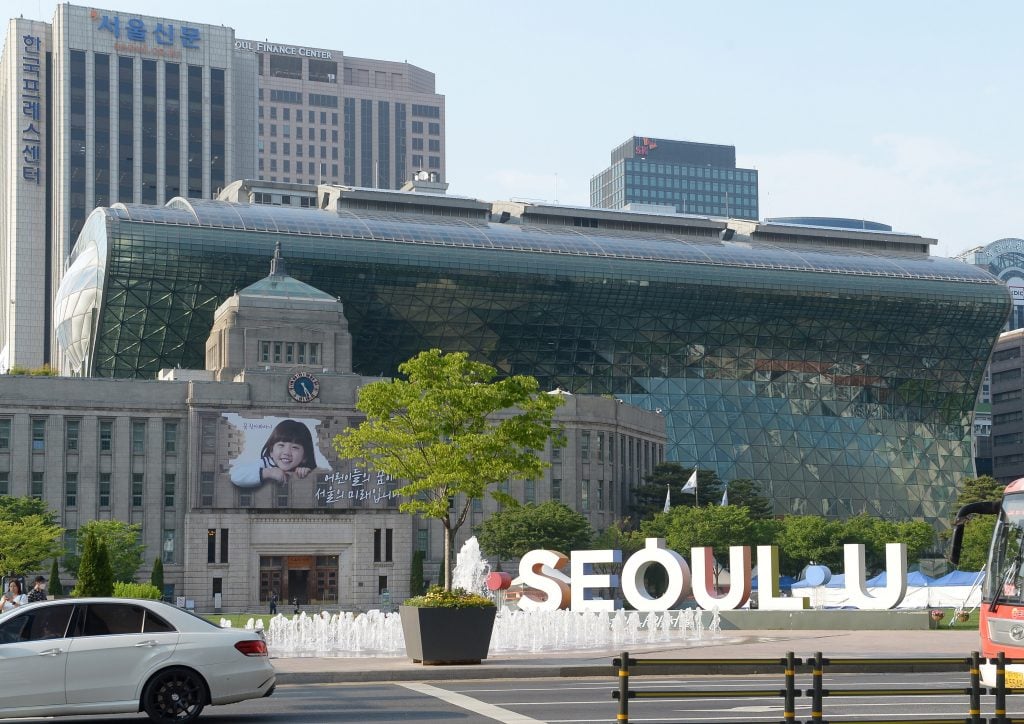Market
As Big-Ticket Fairs Open in Seoul, Revered Biennials Await Down South
The Frieze and KIAF fairs and the Busan and Gwangju biennales are on tap in the Republic of Korea. Buckle up!

The Frieze and KIAF fairs and the Busan and Gwangju biennales are on tap in the Republic of Korea. Buckle up!

Vivienne Chow

The Big Picture is excerpted from The Asia Pivot, Artnet Pro’s biweekly members-only newsletter providing mission-critical analysis, insights, and exclusive intelligence on developments in Asia’s art markets, with a focus on business opportunities and challenges. Subscribe here to receive it directly to your inbox.
Flights, booked. Hotel, confirmed. RSVPs, done. Your early September trip to Seoul is set. But you have planned other stops in South Korea, right?
Big things are afoot on the Korean Peninsula next week. The third iteration of Frieze Seoul will run alongside the homegrown Kiaf Seoul at COEX in the tony Gangnam district. Meanwhile, two of Asia’s most revered biennials, in the cities of Gwangju and Busan, will take place as part of what is being billed as a nationwide Korea Art Festival.
Featuring 78 artists from 36 countries, the 12th Busan Biennale opened to the public earlier this month in that southern coastal city. It is titled “Seeing in the Dark,” and it has been curated by Vera Mey and Philipp Pirotte.
The 15th Gwangju Biennale welcomes the public on September 7, the day Frieze Seoul ends. (Those attending the back-to-back previews for both will need to move quickly: secure your train tickets now.) This edition, with 73 artists, has been curated by the French critic Nicolas Bourriaud; it’s titled “Pansori, a soundscape of the 21st century,” referring to the genre of musical storytelling that dates back centuries, and it runs through December 1.
The Gwangju Biennale’s ambition to position itself as Asia’s answer to Venice Biennale was made loud and clear in its last edition, which was held last year due to a Covid disruption. It saw an expanded line-up of national pavilions, and its organizers vowed to bring up the number even more this year to celebrate the 30th anniversary of the event. (The Gwangju Biennale also staged a Venice Biennale collateral event this year, “Madang: Where We Become Us,” an archival exhibition on its history, to celebrate the occasion.)
Despite the mixed reviews of last edition’s presentations of national pavilions, Gwangju’s adoption of Venice’s model appears to be paying off. Its Gwangju Biennale Pavilion initiative is being billed as a cross-cultural platform that features 32 participating countries and 180 artists with an emphasis on collaborations among institutions, countries, and curators, in addition traditional models of national pavilions.
The U.K.’s pavilion is known as the British Council-Korea Foundation Pavilion, to emphasize the exchange between the two countries, while Asian American artists will take the center stage of the U.S. Pavilion, organized by the Asian Art Museum of San Francisco. The China Pavilion will be organized by Choi Sung-rok, director of Art Soul, along with Shin Hang-seop as curator.
Japan, which has long-running historical tensions with Korea (see the recent return of hit TV series Pachinko), will present “We (Still) Have Things to Remember” at its pavilion, curated by Hiroki Yamaoto. It will feature works by artists Akiko Utsumi and Terue Yamauchi addressing the past of Japanese colonialism, while honoring Gwangju’s history of popular resistance.
While billed as non-commercial events, biennials have, of course, become increasingly important sites for business in recent years. But The Asia Pivot dove quickly into the lists of artists for the main Gwangju and Busan biennials and found that at least half of the participants do not have clear gallery representation. (This is especially true for those from the Asia-Pacific region.)
A more detailed investigation is needed to establish the artists’ full market ties, but initial research suggests that these two exhibitions have not been conquered by the big-money art world that is congregating up north at two of the region’s biggest bazaars—a promising sign for those on the hunt for under-recognized artists.
Stay tuned for our Korea coverage in the weeks to come.